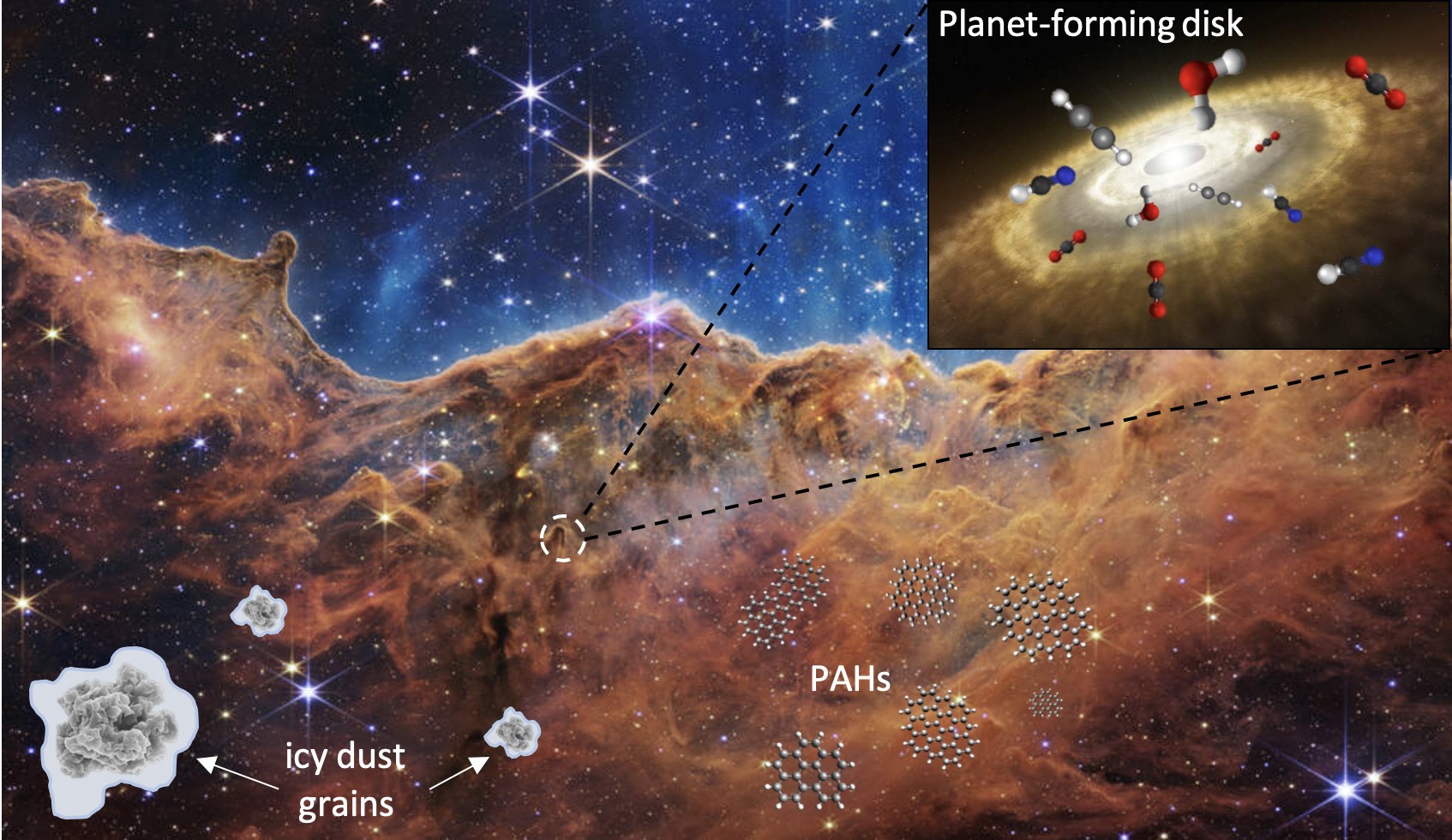1.6 million euros for Astrochemistry and James Webb Space Telescope
The Dutch Research Council (Nederlandse Organisatie voor Wetenschappelijk Onderzoek, NWO), recently awarded funding to the Dutch Astrochemistry Network (DAN), led by Prof. Inga Kamp of the Kapteyn Astronomical Institute. DAN receives the funding for their research programme ‘Dutch Astrochemistry in the era of the James Webb Space Telescope (JWST)’. The goal is to gain more insights into the origin and evolution of molecules in space and their role in the universe by using JWST data.
The application was submitted by Prof. Inga Kamp, on behalf of a team of researchers from six Dutch universities and research institutes (DAN). The objective of DAN is to generate new experimental and theoretical data that will aid the interpretation of astronomical observations performed by JWST. Withing the programme, researchers will study how the main materials that carry carbon, oxygen, nitrogen and hydrogen atoms, namely interstellar ices and hydrocarbons, evolve chemically from molecular clouds to the stages where they are incorporated into planets and their atmospheres. The six partners are the University of Groningen, Radboud University Nijmegen, University of Amsterdam, Leiden University, Technical University of Delft and Netherlands Institute for Space Research SRON.
Launched in 2021, the James Webb Space Telescope (JWST) is the most complex and powerful space telescope ever built. DAN is an interdisciplinary network established by NWO in 2010. DAN brings together experts in astronomical observations, quantum chemical calculations, modelling and laboratory astrophysics.

| Last modified: | 27 July 2023 10.27 a.m. |
More news
-
13 May 2024
‘The colourful cells of petals never get boring!’
Most people will enjoy colours in nature. However, the interest of evolutionary biologist Casper van der Kooi goes much further: he studies how flowers, birds, butterflies, and beetles get their colours. He also studies how these colours are used...
-
13 May 2024
Trapping molecules
In his laboratory, physicist Steven Hoekstra is building an experimental set-up made of two parts: one that produces barium fluoride molecules, and a second part that traps the molecules and brings them to an almost complete standstill so they can...
-
07 May 2024
Lecture with soon to be Honorary Doctor Gerrit Hiemstra on May 24
In celebration of his honorary doctorate, FSE has invited Hiemstra to give a lecture entitled ‘Science, let's talk about it’ on the morning of 24 May
